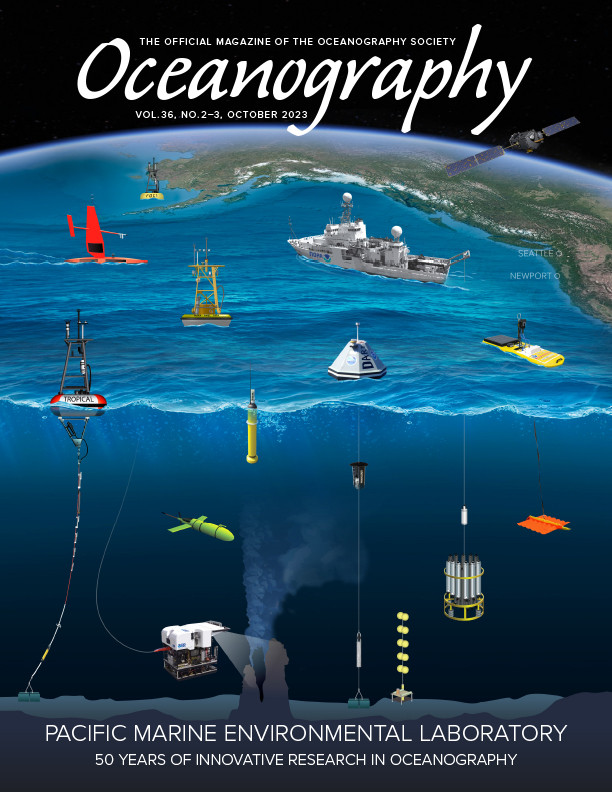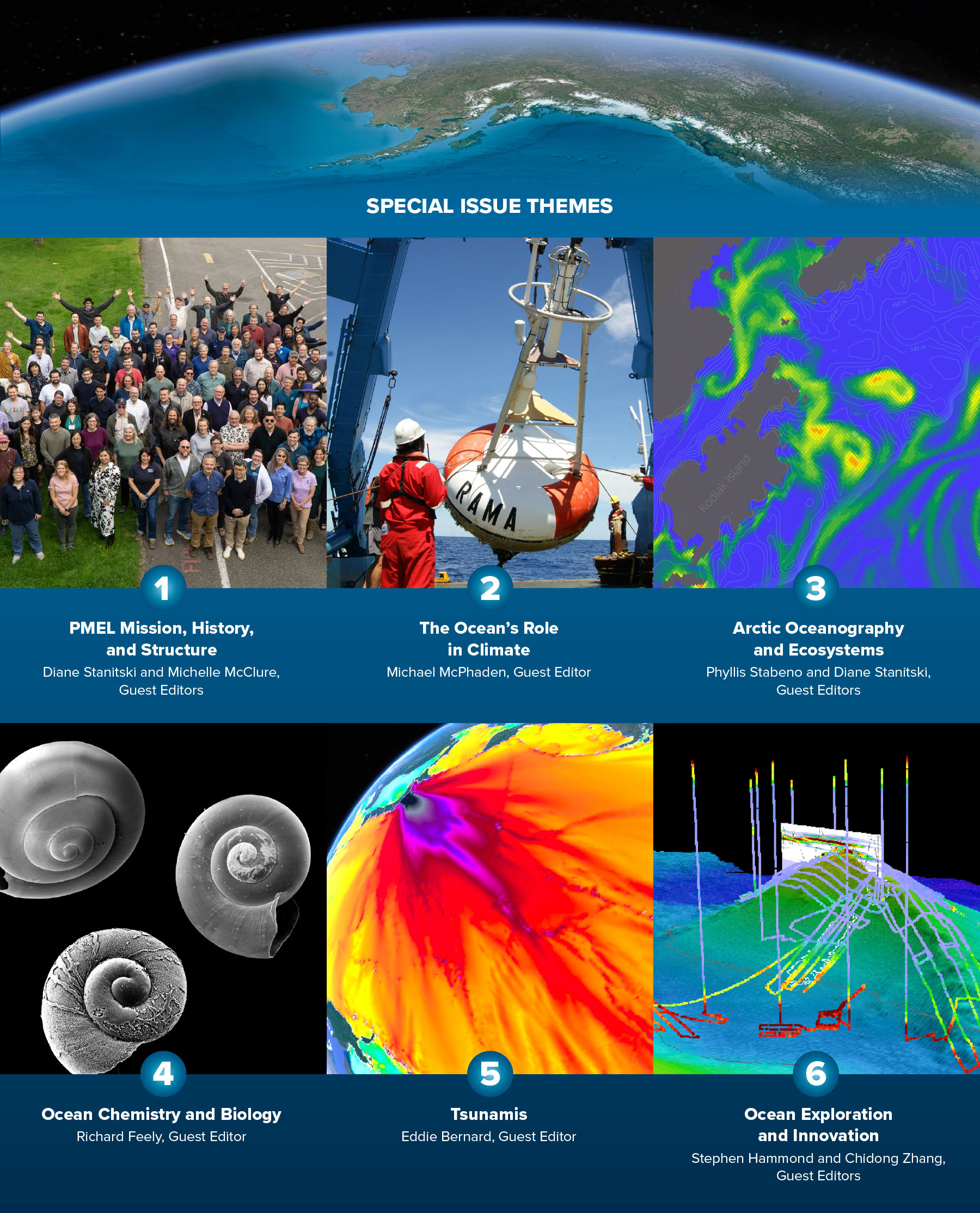Full Text
In October 2023, we will celebrate the 50th anniversary of NOAA’s Pacific Marine Environmental Laboratory (PMEL), a world leader in oceanographic research and the development of innovative instrumentation and measurement strategies for monitoring and observing ocean conditions at global scales. Through the collective efforts of PMEL and its national and international research partners, our researchers have fundamentally advanced the scientific understanding of climate variability and change, extreme and weather events, the effects of climate change on marine ecosystems, ocean carbon and sulfur cycles, ocean acidification, Arctic oceanography, tsunamis, and ocean-seafloor interactive processes. During this same period, PMEL scientists and technicians have been advancing the science and technology innovation necessary to expand our observational capabilities in order to provide coverage over large sections of the ocean. These advances have profoundly shaped our understanding of Earth system processes and have led to improvements in environmental prediction, climate assessments, and weather and climate services.
As one component of PMEL’s 50th anniversary celebration, the PMEL team has been working with the Oceanography editor to develop a special issue of the journal focused on highlighting the laboratory’s scientific work over the last five decades. This special issue is divided into themes that delineate how PMEL research and observations have contributed to the advancement of NOAA’s mission to understand and predict changes in climate, weather, and oceans and coasts, and to share that knowledge and information broadly. The special issue is organized along six themes, each of which has one or two guest editors.
|
|
The theme editors extend their most sincere thanks and appreciation to the lead authors and coauthors, scientists, and staff who carried out the research and provided the data that are described in the articles presented in this special issue. We especially thank Sarah Battle and Sandra Bigley for their exceptional help with the preparation of the figures and editing of the manuscripts. We are grateful to David Detlor, John Thibodeau, and Avi Litwack at the NOAA Fisheries Office of Science and Technology and graphic designer Sandra Graubard for their additional support. We also want to thank Ellen Kappel, Vicky Cullen, and Johanna Adams of The Oceanography Society’s Oceanography staff for their incredible editing work, layout designs, and artwork suggestions that improved the manuscripts.
As a final note, it has been a special honor for me to spend most of my career working with the many outstanding and dedicated individuals who I have had the privilege to call my friends and colleagues at PMEL over the last 50 years. I have been truly blessed to have the opportunity to work with folks who fully believe in the NOAA concepts of science, service, and stewardship.
Richard A. Feely
Special Issue Guest Editor and
Senior Scientist, NOAA PMEL


